If you want butterflies, bees, and hummingbirds in your garden, plant some bee balms.
This fragrant plant attracts fluttering wildlife and is also quite lovely to behold.

The Basics of Bee Balm
Bee balm or Monarda is a genus of fragrant flowering plants from the mint family native to North America.
Other common names of the bee balm are Oswego tea and horsemint.
Bee balm is named for its ability to attract a lot of bees, among other wildlife, while rabbits and deer will not touch it.
Monarda is comprised of species of either annual or perennial herbs that can grow from 8 to 35 inches (20 to 90 cm).
Its slightly hairy leaves grow to about 2.5 to 5 inches (6.3 to 5.5 cm) long.
It has tubular flowers with a narrow upper lip which come in different colours such as red, light purple, or pink.
Bee balms are used for medicinal purposes such as to extract essential oil, with the specie M. didyma containing the highest concentration of oil.
Monarda bradburiana
Also known as Bradbury’s beebalm or eastern beebalm.
This specie of bee balm is a perennial native to the southeastern United States.
The Bradbury’s beebalm grows to about 1 to 2 feet (30 to 60 cm). The eastern beebalm’s stems are square and hairless, but new growth could have some hair along the angles.
Its leaves grow to about 3.5 inches (9 cm) long and 2 inches (5 cm) wide.
Its flowerheads bloom in late spring or early summer and are about 1.5 inches (4 cm). They are cone-shaped at first, then flattening out later.
This bee balm’s florets can be either white or pink with purple speckles on the slightly wider lower lip.
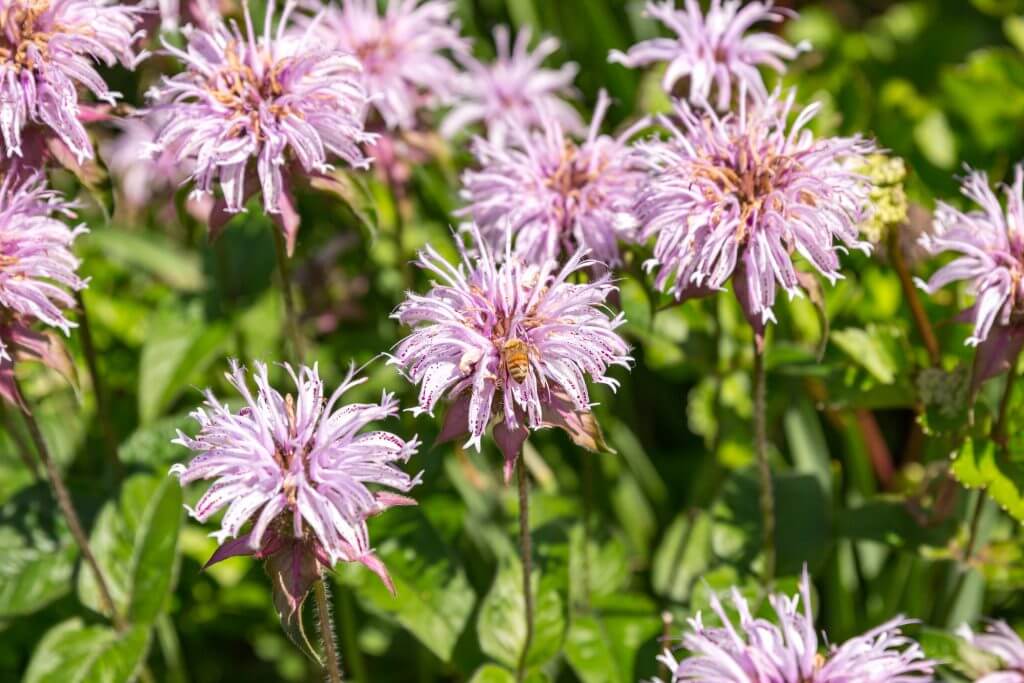

Monarda citriodora
Also known as lemon mint, lemon beebalm, or purple horsemint.
This bee balm is native to Mexico and much of the United States.
They give off a scent that can be described as a mix of lemon and oregano.
The lemon beebalm can grow up to 3 feet (91 cm) high and produces either white, pink, or purple flowers in late spring to early summer.
This bee balm dies in the first frost, but their seeds can germinate and grow the following spring.


Monarda clinopodia
Also known as basil bee balm, white bergamot, or white bee balm.
This perennial bee balm is native to North America.
The white bee balm is a wildflower that can grow from 3.25 to 6.5 feet (1 to 2 metres) high.
The leafy bracts of the basil bee balm are white or white-tinged.
Its corolla is either pink or white with dark spots and grows to about 0.5 to 1 inch (1.5 to 3 cm).
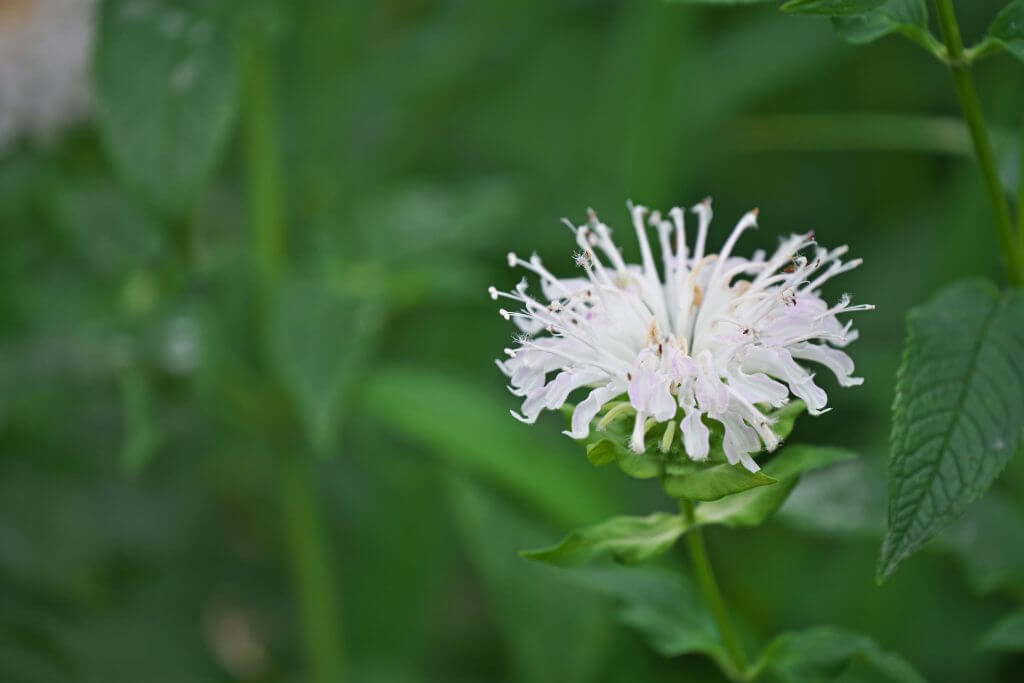

Monarda clinopodioides
Also known as basil beebalm.
This annual bee balm is native to the United States, specifically Texas, Oklahoma, Louisiana, and Kansas.
The basil beebalm can grow up to 12 inches (30 cm) tall.
Its leaves are either lance-like or oblong with small teeth and hairs.
Its flowers are either pink or purple with green bracts.
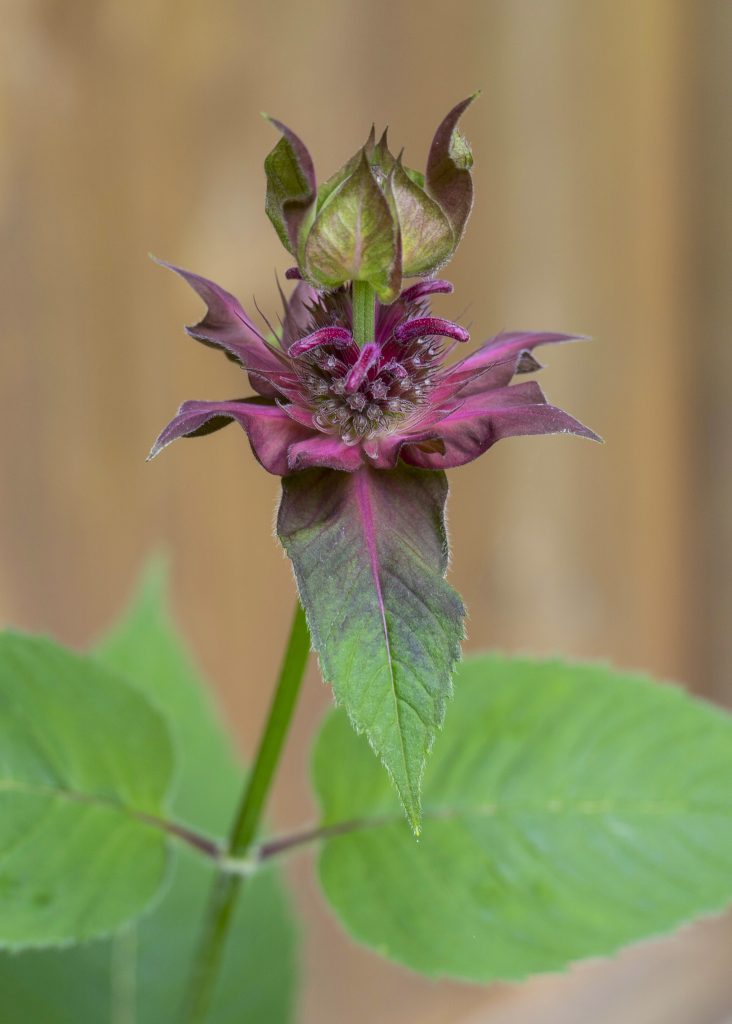

Monarda didyma
Also known as bergamot, Oswego tea, crimson beebalm, scarlet monarda, or scarlet beebalm.
This popular aromatic bee balm is native to North America, in some parts of Canada and the United States.
It is called bergamot because of the similarity in its scent with the citrus bergamot (citrus bergamia).
This bee balm grows from 3 to 5 feet (0.9 to 1.5 metres) high.
Its leaves are 2 to 6 inches (5 to 15 cm) long and 1 to 3 inches (2.5 to 8 cm) wide.
This bee balm’s flowers are bright red and tubular, about 1 to 1.5 inches (2 to 4 cm) long. It blooms from middle to late summer.


Monarda fistulosa
Also known as wild bergamot.
This bee balm is also a wildflower native to North America and can grow up to 3 feet (0.9 metres) tall.
Its leaves are lance-like and toothed, growing to about 2 to 3 inches (5 to 8 cm) long.
Its flowers, with each cluster about 1.5 inches (4 cm) bloom in summer, with colours varying from pinks to lavenders.


Monarda media
Also known as purple bergamot.
This bee balm is also native to North America, specifically eastern United States and Ontario, Canada.
This perennial bee balm can grow to around 2 to 3 feet (60 to 90 cm).
Its flowers are reddish-purple with purplish bracts.
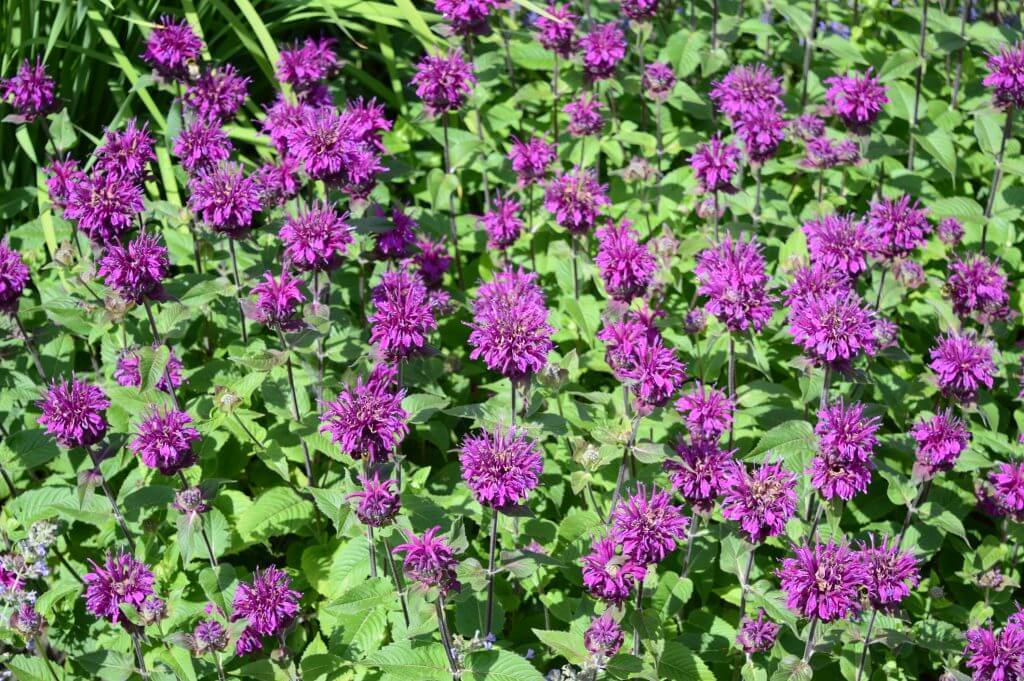

Monarda punctata
Also known as horsemint or spotted beebalm.
This bee balm is native to eastern Canada and the United States, and northeastern Mexico.
This particular bee balm has yellow tubular flowers with purple spots and gives off a scent similar to thyme.
What makes this bee balm different from other monardas is that its flowers are stacked up a stem, and the bracts under each flower are radiating from the stem. Its bracts vary in colour, from white to light pink.
The spotted beebalm contains thymol, which is a fungicide and antiseptic.
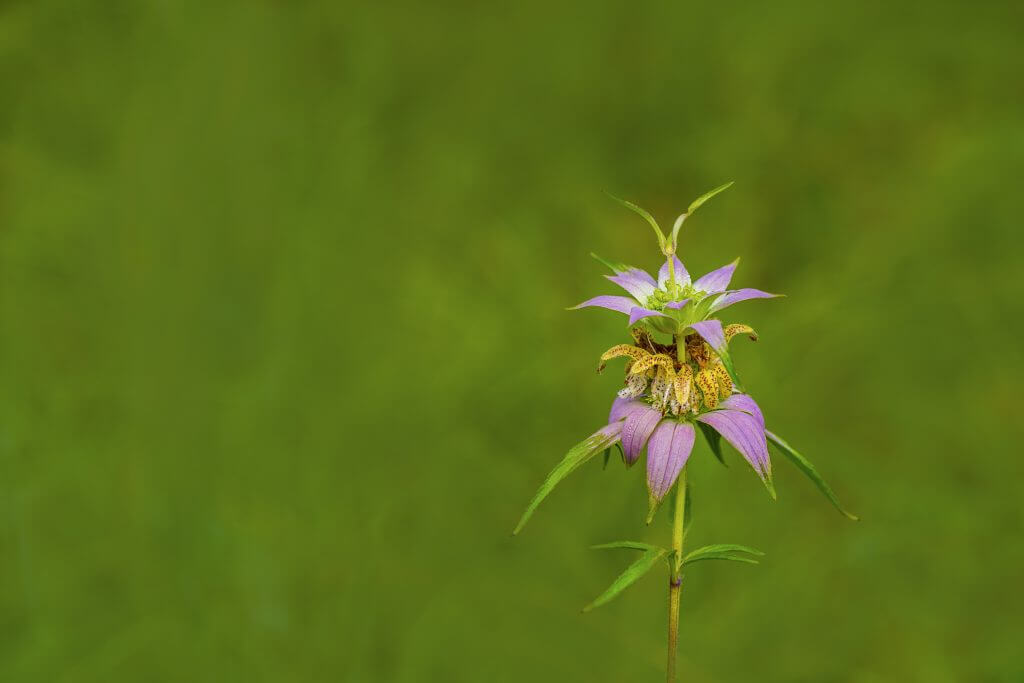

Planting Your Bee Balm
Plant your bee balm in the spring or autumn.
They prefer moist and rich soil in full sun, but they can tolerate a little shade.
Give your bee balm plants enough space, about 18 to 24 inches (45 to 60 cm) apart.
Water deeply after planting.
Caring for Your Bee Balm
Bee balms are relatively easy to grow and care for, as many of them grow in the wild.
Pick your bee balm’s flowers regularly to encourage more blooms. Deadhead too by snipping at an angle below the spent flower, but cut right above the new leaf growth.
Pinch off the stem tips of new growth on your bee balm to encourage bushier growth. Do this in early spring.
Thin out your bee balms if they are too crowded.
Feed your bee balm with a multi-purpose fertiliser and keep its soil moist throughout the growing season.
Common Problems with Bee Balm
Crowded bee balms are more susceptible to powdery mildew. They grow on your plants when there is not enough air circulating the bee balms. Treat your bee balm with fungicide if you see powdery mildew.
[elementor-template id=”4604″]
[elementor-template id=”6387″]
